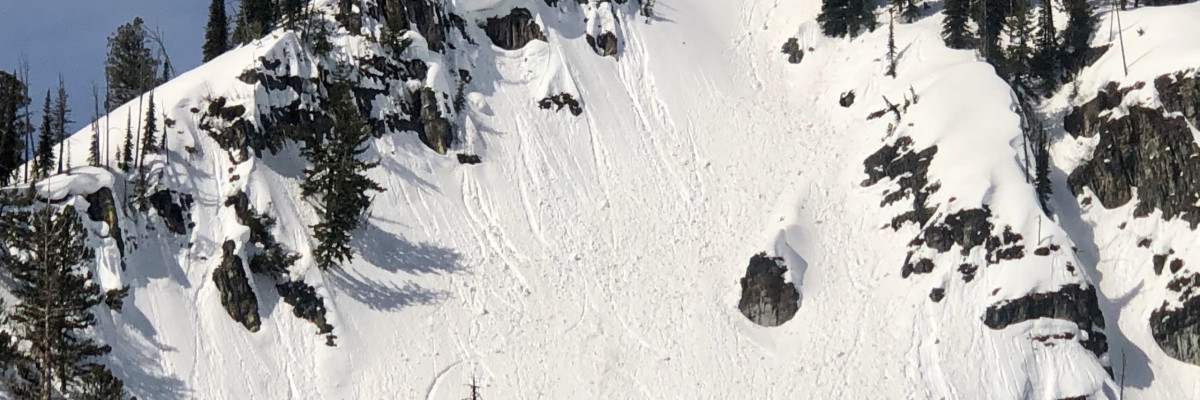The avalanche danger in the west central Montana backcountry is CONSIDERABLE.
Good Morning. This is Jeff Carty with the West Central Montana Avalanche Center advisory on Saturday, April 3, 2021. This advisory is sponsored by Spark R&D. This advisory does not apply to operating ski areas and expires at midnight tonight. The USDA Forest Service is solely responsible for its content.
Weather and Snowpack
Mountain temperatures this morning ranged from 30º to 41º to. There was an inversion last night with higher temperatures at upper elevations. Temperatures are forecast to reach 59º above 6000′ today. Freezing levels will be at least 7500’, potentially climbing to 10000’. The sun will rapidly warm southern aspects. Winds will be light out of the southwest.
Last night was the second in a row with elevated temperatures that did not dip below freezing. Temperatures remained higher than the previous night so less cooling of the snow surface occurred. Strong sun and high temperatures yesterday added considerable warmth to the snowpack, saturating the snow on all solar aspects. Any freeze that happened on the snow surface last night will be shallow. By noon yesterday, the snowpack at 7600’ on south aspects was saturated throughout. Small loose wet slabs were easy to trigger and the snowpack lost cohesion throughout the day. This will happen earlier today.
The risk of large wet avalanches increases today. Freezing levels rising to above 7500’ and solar warming will destabilize the snow further. Loose wet avalanches could entrain considerable snow and have the potential to be much larger than the slides seen yesterday. The potential also exists for very large wet slabs to release. The January 13th crust still exists deep in the snowpack. While bonded when dry, warm wet conditions could reawaken it or other dormant layers.
Once the snow warms up, is saturated, or you are punching past mid boot, it’s time to move to shadier aspects. If you are post-holing in wet snow stay well away from avalanche terrain.
North aspects were dry yesterday above 6800’ in the Rattlesnake. However, last night’s elevated temperatures may have affected the snow. We were still able to find isolated pockets of buried surface hoar and near surface facets yesterday on the north. There is a slight possibility to trigger a slide on these in steep, unsupported terrain. Avoiding convexities over 35º is one way to manage this problem.
Timing will be difficult today, and the time window for stable corn skiing may not exist at all, with most slopes not refreezing overnight. Given the unpredictability of wet slides, and the generally poor skiing and riding conditions of saturated snow, avoiding all avalanche slopes with solar warming is a good risk management option today.
The Bottom Line
Above freezing overnight temperatures combined with sun warming make loose and wet slab avalanches likely today. The extended warmth increases the potential size of avalanches and we may see very large avalanches in specific locations. Move to shadier aspects as roller balls start and you sink past mid boot in wet snow. Plan your exit from the backcountry so you are not crossing southerly or westerly avalanche terrain late in the day. On north slopes, above 6800’, faceted layers have a slight potential to propagate. Avoiding convex north slopes over 35º is the easiest management. Stay alert for red flags. Carry a beacon, shovel, and probe.
Public Observations
Thank you to everyone who has taken the time to send in a public observation. Please keep sharing what you find and see while out in the backcountry. You can now text us your observations to (406) 219-5566 when you don’t have time to fill out the observations page.
Ski and ride safe.














